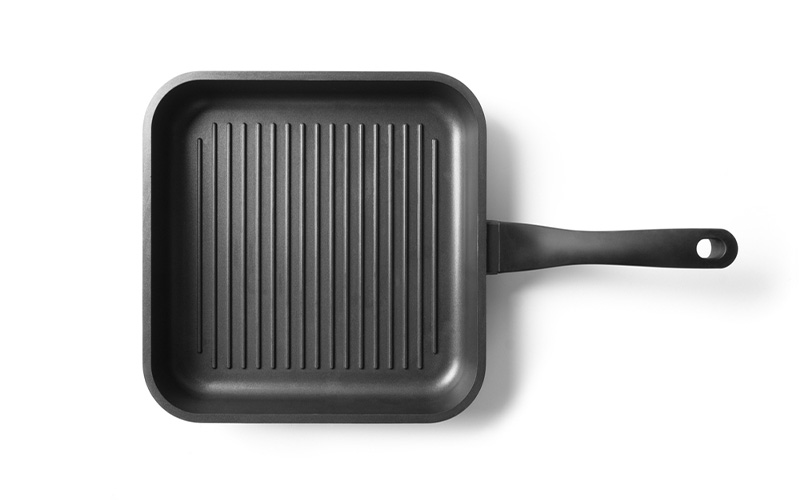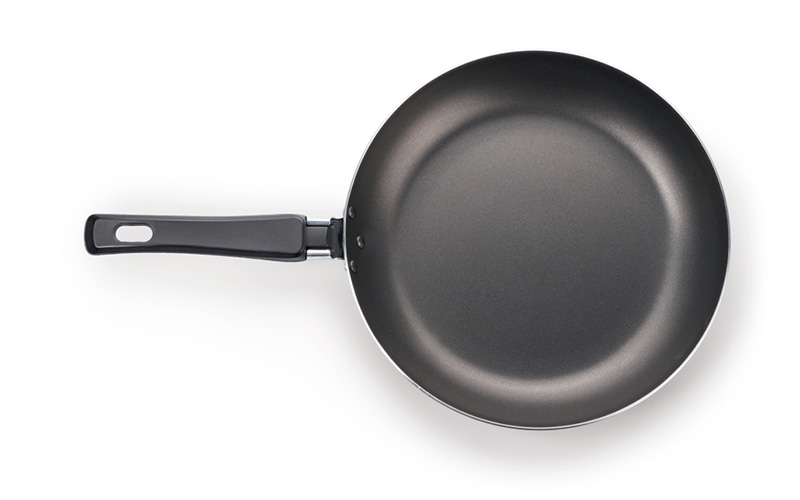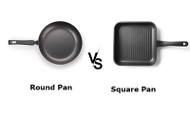Square Cooking Pans Vs Round Cooking Pans? Which One Is Best?
Nov 23rd 2023
With the correct cookware, cooking can be incredibly simple. Every shape and size of the pan is available for every meal you prepare. The right pan can make all the difference in your dish, whether you're baking a casserole or making delicate crepes. Keep your rack stocked with carefully selected pans that fit your needs rather than packing it full.
Types Of Cooking Pans
The kind of pan you use while cooking has a big influence on how your food turns out. Square and round pans are two of the most widely used shapes among the many available. This article compares and contrasts square and round cooking pans, discussing their benefits and drawbacks.
Read More About Discovering Baking Pans: Types, Uses, and Expert Tips for Perfect Results
Square Cooking Pans

Square pans are defined by their straight edges and angular corners. They are frequently employed in roasting, grilling, and baking and are often made of cast iron, stainless steel, or non-stick coatings. Square pans have a special set of benefits.
Advantages of Square Pans
- Increased Surface Area: The straight edges and corners provide more cooking surface, ideal for browning and crisping.
- Uniform Cooking: The shape allows for even distribution of heat, especially in oven cooking.
- Versatility: Perfect for baking cakes, brownies, and even casseroles.
Round Cooking Pans

With their familiar and welcoming shape, round cooking pans have long been the go-to choice in kitchens across the globe. Available in a delightful array of sizes, these pans effortlessly adapt to various culinary tasks, from the gentle simmering of a stew to the lively sautéing of fresh vegetables.
Advantages of Round Pans
- Heat Distribution: The round pan is a symbol of culinary balance. Its circular form ensures heat lovingly wraps around its contents, offering a uniform cooking experience. This is particularly beneficial on stovetops, where the pan's shape promotes an even heat distribution, ensuring every ingredient is perfectly pampered.
- Stirring and Flipping: With no corners, the round pan turns the simple stirring into a graceful dance. Ingredients glide effortlessly across its surface, making the flipping and stirring of foods easier and a joyous culinary ballet. This seamless movement is a blessing for dishes that require constant attention and delicate handling.
- Best for Liquids: Round pans are like comforting basins for your soups, sauces, and broths. Their shape naturally lends itself to the preparation of liquid-based dishes. Whether it's a rolling boil or a gentle simmer, these pans handle liquids with a nurturing embrace, ensuring flavors are combined and savored in every spoonful.
Additional Comparison Of Pans
Comparison based on various properties is as follows:
Cooking Techniques And Suitability
- Square Pans: Excellent for baking and roasting. The corners provide more space for food to crisp and cook evenly.
- Round Pans: Better for stovetop cooking, like frying and sautéing. The curved edges facilitate easy movement of food.
Space Efficiency And Storage
- Square Pans: Can be more space-efficient in ovens and cabinets, fitting snugly against edges.
- Round Pans: May require more room on the stovetop but work well in round pot racks.
Aesthetic And Presentation
- Square Pans: Provide a unique and modern presentation, especially for baked goods.
- Round Pans: Offer a classic look, suitable for traditional plating styles.
Special Considerations
- Material Choice: The material of the pan (cast iron, stainless steel, non-stick, etc.) affects its heat conductivity and cooking performance.
- Heat Sources: Not all pan shapes work equally well on all heat sources. Induction cooktops, for instance, might favor certain pan bases over others.
Maintenance And Durability
- Cleaning: Square pans might require more attention to clean the corners.
- Durability: The design and material influence the longevity of the pan.
Impact On Cooking Time
- Square Pans: These may require slight adjustments in cooking time due to their increased surface area.
- Round Pans: Generally adhere to standard cooking times, especially for recipes designed for round pans.
Cooking Uniformity
- Square Pans: The corners can sometimes cook differently than the center, requiring careful placement in the oven.
- Round Pans: Offer more uniform cooking, especially on circular stovetop burners.
When To Choose Which
Ideal Recipes For Square Pans
- Baking: Brownies, cakes, and bar cookies.
- Roasting: Vegetables and small cuts of meat, where crisp edges are desired.
Ideal Recipes For Round Pans
- Sautéing: Meats, vegetables, and stir-fries.
- Boiling: Pastas, soups, and stews.
Innovative Uses
Square Pans
- Meal Prepping: The shape can be advantageous for dividing meals into portions.
- Decorative Dishes: Create visually appealing desserts and casseroles.
Round Pans
- Tossing and Flipping: Ideal for recipes requiring flipping, like omelets or pancakes.
- Simmering: Perfect for dishes that need slow and consistent simmering.
User Experience And Ergonomics
Handle Design
- Square Pans: Often come with wider handles for a secure grip due to the heavier weight.
- Round Pans: Typically have a single long handle designed for easy maneuvering.
Balance and Weight
The shape can affect the pan's balance and overall weight, impacting handling during cooking.
Environmental And Health Considerations
Non-Stick Coatings
- Some cooks prefer non-stick coatings for ease of cooking and cleaning. However, it's essential to consider the health and environmental impact of these coatings.
Sustainability
- The production process, material sourcing, and recyclability of the pan should also be considered for environmentally conscious cooking.
Final Recommendations
For Home Cooks
Consider your most frequent cooking methods and choose the pan shape that meets those needs.
For Professional Chefs
Having a variety of both shapes enhances the flexibility and creativity in a professional kitchen.
Conclusion
Both square and round cooking pans have unique advantages and are suited for different cooking techniques. Your choice should depend on your cooking style, frequently preparing dishes and kitchen storage space. Experimenting with both shapes can broaden your culinary skills and add versatility to your cooking repertoire.


